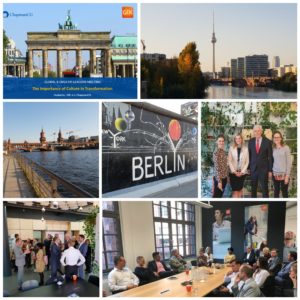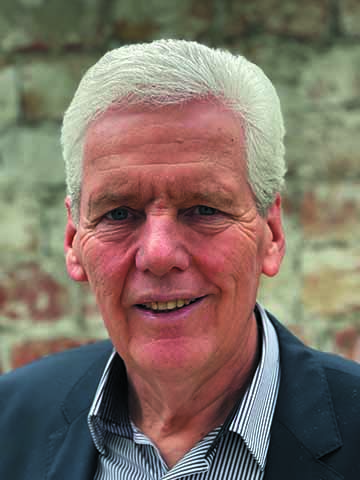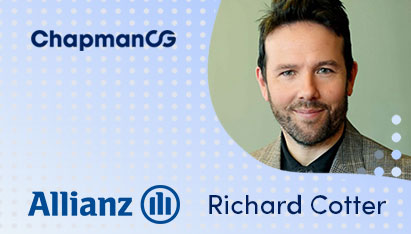As the pace of business increases and new disruptive technologies are developed, companies need to adapt quickly, and organizational culture is crucial to this, according to HR leaders at a recent ChapmanCG roundtable in Berlin.
Our co-host Maj Wad Seider, Vice President Culture & People at GfK, helped to kick off discussions by sharing GfK’s own transformation journey as it moves from a traditional market research company to a trusted partner in predictive analytics.
Why is Culture Important?
Cultural alignment around a shared set of core values correlates directly with how successful an organization can be, and also influences attracting talent and retention, according to Dr Kim S Cameron and Dr Robert E Quinn from the University of Michigan.
This goes above and beyond normal business strategies and competitive advantages.
“Successful companies have developed something special that supersedes corporate strategy, market presence, or technological advantages. They have found the power that resides in developing and managing a unique corporate culture.”
Making Culture Change Successful
For any transformation to work well, there are a number of considerations to be aware of, and putting culture at the forefront is paramount. Equally, you can only change what you acknowledge already exists, so there should be honesty and objectivity around the current culture and values.
GfK is radically transforming its business model, and their CEO understands that culture is key.
To understand the current situation, the culture team started with a global study across a variety of employee populations within the company in order to gauge the cultural picture. Among the results, a number of topics were raised showing how people needed further clarity with regards to the new strategy, and what it meant for them.
Knowing this, it helped GfK to realise that the new desired identity was not as clear nor as easy for all employees to grasp and this gave them a starting point for how move forward. Amongst several other initiatives they created a new leadership framework, and a ‘transformation story’ to show what the culture shift meant firstly to the company and then what it meant to employees at every level, so people could start to understand and identify the key values as they applied to them directly.
The transformation team wrote internal blogs so people could follow the progress of the change and receive updates. They also created the new leadership framework to help guide leaders within the organization, and held workshops to help clarify what these leadership qualities look like in practice and how they could be achieved.
After implementing these initiatives, the employee engagement survey showed that a few weeks later, over 80% of employees understood the new mission.
Communication is Key
Business leaders work together to create the company strategy, and then HR leaders are responsible for transforming this vision into an active culture. However, it is critical that business leaders remain involved throughout the process to ensure there is agreement about what the expected outcomes are, and that there is a shared language that people understand.
One organization arranged for executive leaders to each sponsor a specific change topic, creating a sense of ownership and ensuring that they were being held accountable in actively driving change.
Once an organization’s values have been agreed, these can then be integrated into areas such as hiring, performance management and talent development.
Transparency through clear and frequent communication across the business, as well as the language used, is crucial to helping employees understand the journey and what it means to them. Change often brings a lot of uncertainty around job security and the future, so sharing as much information as is feasible can mitigate this sense of insecurity to a certain extent.
Monitoring Progress
Just as the engagement survey at the beginning of a transformation can help assess issues to be addressed, keeping a finger on the pulse throughout the journey is important in order to gain valuable insights into the success of the changes being introduced.
The digital HR technology available and ‘pulse-taking’ tools make this easier than ever. Measuring employee engagement, performance and wellbeing helps to see where adjustments may need to be made before small issues grow into larger ones. It is also a great way to engage employees in bringing new ideas and suggestions to the table. Being able to quantitively measure the success of a transformation can give some very tangible data for those business leaders who want to see clear ROI.
Patience
As one HR leader said, you can’t change everything overnight and it’s also important to respect where employees have come from. Change is a marathon, not a sprint.
Change should also not imply that everything before was ‘bad’, and leaders need to understand that in the case of a business transformation, some employees will be grieving the loss of what they have helped build in the past.
Some things will take more time to implement, however there are also some quick wins that may help people adjust. It may not be possible to move into a shiny new building or make major renovations, however even some changes in office décor or furniture can help employees to make the mental shift towards the new culture faster.
Implementing some immediate solutions that support the new cultural values – whether that is flexible working hours, health benefits (onsite yoga classes, gym memberships) or performance management incentives that reward behaviours can accelerate acceptance of a new cultural framework.
As Sushman Biswas says in his article on transformation in the HR Technologist, “Establishing the right people practices is essential for any business transformation effort, for ultimately the goal of any organizational transformation is to help people achieve more – build their capabilities, increase engagement, and develop more meaningful connections between purpose and business.”

Key Contributors:


 René Rosso
René Rosso Kirsty Jucker
Kirsty Jucker Andrea Merrigan
Andrea Merrigan Orelia Chan
Orelia Chan Stanislav Medvedev
Stanislav Medvedev Fleur Daniell
Fleur Daniell Finian Toh
Finian Toh Tim Rayner
Tim Rayner Nicola Hasling
Nicola Hasling




